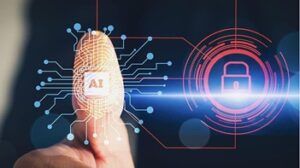
The integration of artificial intelligence (AI) into cybersecurity has sparked intense debate and speculation in recent years. On one hand, there’s the promise of AI revolutionising defense capabilities, while on the other, concerns about its potential pitfalls loom large. As businesses grapple with the daunting task of safeguarding their digital assets against a myriad of cyber threats while staying in line with the AI adoption trend, the question arises: does AI complicate or simplify cybersecurity?
To unravel this conundrum, we must first understand the intricate interplay between AI and cybersecurity, and how these two realms intersect to shape the future of digital defense. Join us as we delve into the profound impact of AI and its potential to revolutionise the cybersecurity landscape.
The Promise of AI for Cybersecurity
The advantages of AI in cybersecurity are manifold, offering a paradigm shift from traditional systems. While 53% of organisations are in the early stages of AI adoption, 93% of security leaders anticipate its transformative impact within five years, with 89% actively pursuing AI projects. This growing adoption highlights the advantage AI offers for cybersecurity.
Here are a few ways AI revolutionises cybersecurity:
● Machine Learning Advantage
At the heart of AI lies machine learning (ML), enabling systems to autonomously learn from past experiences without human intervention. As developers continuously refine ML capabilities, AI evolves to anticipate and counter future threats, akin to human learning but without the constraints of time-consuming input.
● Enhanced Pattern Recognition
ML, complemented by human training, empowers AI to discern meaningful patterns within vast datasets, minimising false positives and focusing human operators’ attention on critical issues. This mitigates the common challenge of alert fatigue, where operators risk oversight amidst an inundation of unnecessary alerts.
● Automation of Laborious Tasks
AI automates labour-intensive tasks such as event monitoring and analysis, enhancing the efficiency and efficacy of cybersecurity operations. By relieving human operators of mundane tasks, AI allows them to focus on strategic decision-making and threat mitigation.
● Closing the Workforce Gap
The integration of AI addresses the 2023 projected shortfall of 3.5 million cybersecurity professionals. AI-powered tools like endpoint detection and response (EDR) and security orchestration, automation, and response (SOAR) bolster defense capabilities, bridging workforce gaps and fortifying resilience against evolving threats.
● Future Reshaping
Looking ahead, AI’s integration is poised to further reshape cybersecurity landscapes. According to an IDC report, By 2026, 85% of enterprises are expected to leverage AI, ML, and pattern recognition to augment human expertise, enhancing productivity and foresight amidst evolving threats.
Complexities in AI-driven Cybersecurity
While the integration of artificial intelligence (AI) holds immense promise in cybersecurity, it also presents a myriad of challenges and risks. Here’s a closer look at the complexities involved:
● Data Privacy Concerns
The adoption of AI in cybersecurity necessitates access to large datasets, raising significant data privacy concerns. As AI systems require extensive data for training and analysis, organisations must navigate governance complexities to ensure compliance with privacy regulations and mitigate associated risks.
● Reliability and Accuracy
Ensuring the reliability and accuracy of AI-driven cybersecurity systems is paramount. These systems are susceptible to false positives and negatives, which can undermine their effectiveness. Robust data preparation processes play a crucial role in enhancing reliability and accuracy, mitigating risks associated with data poisoning and algorithmic biases.
● Transparency Challenges
The lack of transparency in AI systems poses a significant challenge for cybersecurity experts. Without clear insights into how AI arrives at specific decisions, validating and understanding these decisions becomes difficult. Addressing transparency challenges is essential to foster trust and confidence in AI-driven cybersecurity solutions.
● Bias Mitigation
Bias, both in training data and algorithms, represents a critical concern in AI-driven cybersecurity. Biased data and algorithms can lead to skewed outcomes and undermine the fairness and effectiveness of cybersecurity systems. Mitigating bias through comprehensive data collection, preprocessing, and algorithmic adjustments is essential to ensure the integrity and equity of AI-driven cybersecurity solutions.
In conclusion, the role of AI in cybersecurity is both promising and precarious. While it offers unprecedented potential to fortify defense mechanisms and combat evolving threats, its integration demands a delicate balance. By acknowledging the complexities and embracing best practices, organisations can unlock the transformative capabilities of AI, navigating the intricate cybersecurity landscape with resilience and foresight. In this interplay between innovation and risk, strategic implementation becomes the linchpin for success, propelling organisations towards greater security and readiness in a dynamic digital ecosystem.












